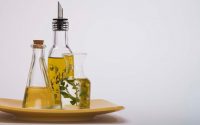Introduction to Soap
Soap is a general term for fatty acid metal salts. The formula is RCOOM, wherein RCOO is a fatty acid radical and M is a metal ion. The carbon number of fatty acids in daily soap is generally 10-18. The metal is mainly alkali metals such as sodium or potassium. It is also useful for special purpose soaps such as ammonia and certain organic bases such as ethanolamine and triethanolamine. In a broad sense, fatty acid salts obtained by saponification or neutralization of fats, oils, waxes, rosins or fatty acids and alkalis may be referred to as soaps. Soap is soluble in water and has a decontamination effect. Various types of soaps are soaps, also known as soaps, metal soaps and complex soaps.
Soap is a general term for fatty acid metal salts. The number of fatty acids in daily soap is generally 10-18. The metal is mainly alkali metals such as sodium or potassium. It is also used for special purposes with ammonia and certain organic bases such as ethanolamine and triethanolamine. Soapy. Soaps include laundry soaps, soaps, metal soaps, liquid soaps, and related products such as fatty acids, hardened oils, and glycerin.
Name
Because the ancients used the acacia to wash clothes in the Yellow River Basin, there was no acacia tree in the Yangtze River valley, so they found another tree whose fruit has the same performance as the acacia, and can wash clothes, but it is more fatty than the acacia. So, call her soaps, also called soapy fruit.
When the artificial detergent was invented, the word “soap” was still used.
Therefore, although there is no thin soap, but there is no fat soap, which is “acacia”.
Because soap was introduced from the West, it was called “foreign alkaline” at that time. Although “alkali” and soap itself could not be equivalent, the Chinese people driven by the novelty still used this name in the official for decades. Until the national industry and commerce made soap itself, it gradually abandoned the word “foreign”.
Principle
The soap molecular structure can be divided into two parts. One end is a COO- (hydrophilic part) with a charge polarity, and the other end is a non-polar carbon chain (lipophilic part). Soap can destroy the surface tension of water. When soap molecules enter the water, they have polar hydrophilic parts, which will destroy the attraction between water molecules and reduce the surface tension of water, so that water molecules are evenly distributed in the water to be cleaned. Clothing or skin surface. The lipophilic part of the soap penetrates into the oil, and the hydrophilic part dissolves in the water. The mixture forms a small oil droplet after being stirred, and the surface is covered with the hydrophilic part of the soap, and does not re-aggregate into a large oil stain. . This process (also known as emulsification) is repeated several times, and all the oil will become very tiny oil droplets dissolved in water and can be easily rinsed off.
Ingredient
Ingredients of soap: sodium carboxylic acid salt R-CO2Na, synthetic pigments, synthetic fragrances, preservatives, antioxidants, foaming agents, hardeners, viscosifiers, synthetic surfactants.
The main component of soap, R-CO2Na, (sodium stearate (C17H35COONa)), in which the R groups are generally different, are various hydrocarbyl groups. R- is a hydrophobic group and a carboxyl group is a hydrophilic group. In hard water soap and Ca2+, Mg2+, etc. form a curd-like substance, fatty acid calcium salt, etc., commonly known as “calcium soap” is used as a useless detergent. Adding the softener to the hard water removes the hard water ions and allows the soap to function. The medicated soap is mainly filled with some disinfectant. Crystal soap is particularly strong due to its soapy base. If you add spices and dyes to it, make a soap with both color and aroma; if you add some medicine (such as boric acid or carbolic acid) to it, it becomes a medicated soap.



